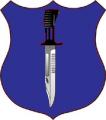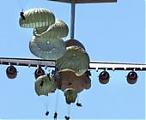When the British Army introduced Battle Drill early in WWII, the same Field Service Regulations that described them also carried the warning that they were not intended to be a substitute for the tactical judgement of battlefield leaders and soldiers; they were simply intended to be training aids from which soldiers and leaders would have weaned themselves off of towards the end of their basic trade training. Of course, what has in fact occurred in practice is the replacement of tactical judgement by rote drill. The US Army formally adopted Battle Drill in the mid-1950's, and at the same time it formally adopted the Fire Team, with two per Rifle Squad.
Thus all the funny business ever since. The Commonwealth Armies only began to adopt the two-Fire Team Rifle Section starting in the late 1970's, and by the 1980's it was the standard. The German Army has recently adopted the two Fire-Team Rifle Squad as well, with 10 men per squad and 1 MG-4 5.56mm LMG per Fire Team. I haven't heard so far, but I suspect that may adopt Battle Drill now too.
The aforementioned is one of the reasons the offensive tactics of the present-day Rifle Squad are so fixated on the Frontal Attack; it requires a minimum of brainpower and a maximum of firepower to undertake. That said, there are a lot of reasons that the Frontal Attack is more often than not necessary: the ground doesn't provide enough cover and concealment; you're conducting mechanized ops and it's pretty obvious to both you and the enemy that you're coming and they're just waiting for you to pile out of your tracks; there's just not the time to perform a slower but less costly other-than-Frontal attack and you have to attack now, otherwise the enemy will have reinforced his position making it harder to attack a little later; etc.
But in those cases when the Frontal Attack can be foregone, the two-Fire Team Squad and Battle Drill shouldn't be allowed to conspire against alternatives to the Frontal Attack. The German Army in WWII, as I have already mentioned before in this thread, never adopted Battle Drill and never formally adopted Fire Teams; if a Squad at any time split into two balanced teams, it was only because the tactical situation at that place and time made it appropriate to do so. The Squad Leader was free to develop and use his best tactical judgment to fight the Squad as best as he saw fit.
The Fire Team concept and Battle Drill have become crutches with which to prop up weak leaders and weak soldiers who otherwise would be clearly seen to be unable to adapt to the tactical situation at hand; at the same time, by tying capable leader's and soldier's hands with doctrine that has morphed into rigid practice, it serves to obscure those whose tactical judgement is otherwise sound.










Bookmarks